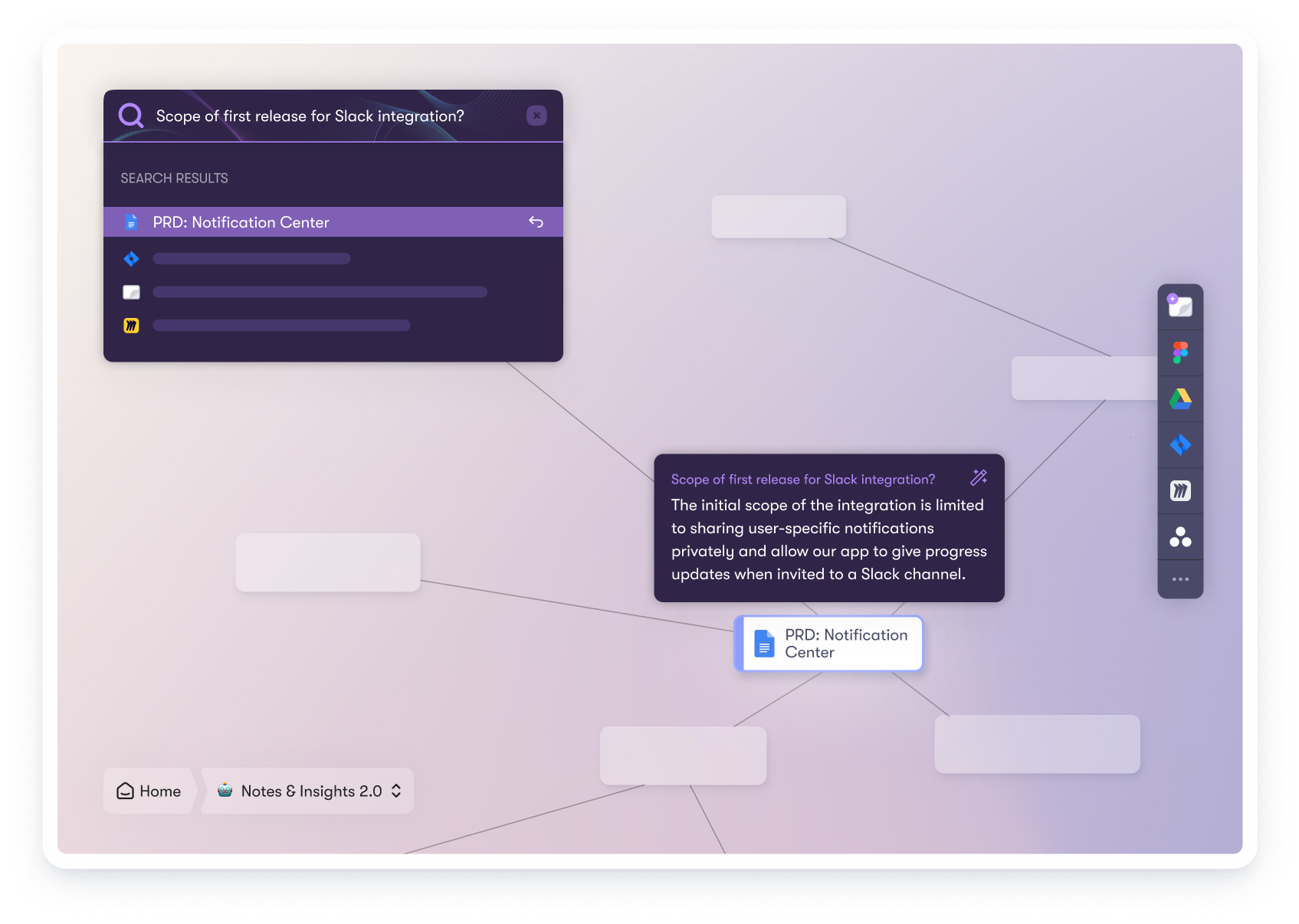How to Lead Successful Cross-Team Collaboration in 2023

What is cross-team collaboration?
Cross-team collaboration happens when employees from different teams work with each other. For instance, any new product launch is a joint effort of various teams like design, development, operations, marketing, etc.
Why is cross-team collaboration important?
Let’s start with a story: Airbus, a multinational aerospace corporation, was all set to launch the biggest passenger plane in 2004. Multiple design teams started working on it and ordered parts. When the parts finally arrived, they weren't fitting well together: the cables were too short. It turns out that designers in different regions were using different computer-aided design(CAD) programs, leading to a mismatch in measurements. This unexpected snag delayed the project, and losses went up to 6 billion dollars.
Sounds like a basic mistake, right? That's a solid example of collaboration going wrong when multiple teams come together. Miscommunication, difference in opinions, varied processes, lack of trust: All of it can contribute to a failed project (and major losses). That’s why you need a solid process to facilitate collaboration.
Taking steps to promote cross-team collaboration can lead to:
- Better alignment between employees and company goals
- Increased knowledge sharing between teams
- Improved workplace relationships which eventually enhance productivity
- Faster response to change and emergencies because of easy coordination
How to facilitate cross-team collaboration
Now that you know the importance of promoting cross-team collaboration, here’s how to nail it in seven steps:
1. Set expectations early on
The first step is to have a clear why.
"A shared 'why' creates a collective focus and enhances collaboration," Helen Buckwell, Collaboration, Team and Leadership Development Specialist.
You can conduct an introduction call to break the ice and establish these expectations:
- What are the shared 'why' or end goals of the project?
- Which team will own which task?
- Establish a point of contact for every task
2. Create a communication plan
The biggest reservation from any team member can be that a lot of time goes into coordination, and very little time is left for the actual work. You can solve the issue by creating a clear communication plan with the below details:
- Frequency of meetings
- Communication platforms
- Expected turnaround time
- Project management tools to track/communicate project progress
3. Create a centralized knowledge hub
The next step is to have everyone on the same page by giving access to the same information set. With a centralized knowledge hub, team members know where to look for answers.
Typically, teams have their knowledge and information distributed across various tools and databases, making it difficult to access if you’re not on the team or don’t have access to a certain app.
- There are pitch decks or client demos which would go in Google slides
- Common project information can be in Confluence
- Team availability details might be in Google sheets
- Product design would be in Figma
- Tasks could be in JIRA
So, how to build a common knowledge base? Collato’s got you covered. It works on top of your favorite platforms like Jira, Miro, Figma, Google Drive, Confluence, and Slack and syncs information without double work. Team members can search for any details related to the project. The best part is, they can ask questions, and Collato looks for the information across all the tools and provides human-like answers.

4. Encourage 360 feedback
Traditionally employees would take tasks from only their managers, complete work, and accordingly, the manager would rate their performance. But time is shifting: Work is not top-down or hierarchical anymore. A lot of assignments are now interdependent. As a result, employees taking feedback from each other can solve alignment issues.
Case in point: 360 feedback is a process where employees do not limit to only taking feedback from their supervisor. But they also take feedback from peers, direct reports, and even customers.
5. Measure effectiveness
Depending on the project, you can define your own key performance indicators (KPIs) to measure if cross-team collaboration is going smoothly. For example, it could be a smoother product launch for a new project or a faster average response time to production issues for an existing product.
- Are you clear on your team goals?
- How approachable are your peers?
- Is your voice heard in meetings?
- Do you get help from peers when you are stuck?
- What one thing would you change about your team process?
6. Plan team-building activities
Team building activities create a fun work environment, but the advantages are not limited to that. It fosters relationships, builds trust, and improves communication within teams.
Here are some ideas for team-building activities (that are actually fun):
- Celebrating wins with drinks or food (cake is always appreciated)
- Encouraging people to come forward with passion projects
- Playing games, or inventing your own game
- Scheduling coffee dates into your calendar
Cross-team collaboration best practices: 3 experts weigh in
1. Avoid heavy dependency on meetings
Kartik Mandaville, CEO at Springworks, says, "One of the basic mistakes which are made today in cross-team collaboration is heavy reliability on meetings. We at Springworks believe that the future of work will be remote and async, which means no unnecessary calls. These shifts focus back to written communication and documentation."
Things may get lost in oral communication, so having more written communication and documentation saves time and makes details easier to track. Since it’s likely not possible to replace all meetings with documents, you should focus on having more valuable meetings and sending out minutes of meetings regularly to ensure no one loses out on information.
2. Be clear on the ask first
Bill Catlette, an executive coach and Partner at Contented Cow Partners, says when the project leader has a clear view of the big picture, they can articulate it well to assigned staff members. This clarity at the leadership level will bring better collaboration and understanding at the ground level.
3. Create forums for open discussions
Matt Artz, Head of Product & UX at Cloudshadow, says in one project he worked on, the marketing and UX teams were not in sync on the product's positioning. To solve the issues, he organized a cross-functional workshop that brought together members from both teams to discuss their views. The result was positive. Teams understood each other's ideas and found common ground for the product's positioning.
Shying away from conflicts won't solve the issues. Instead, let the team discuss their issues ahead for better resolution and coordination.
4 Noteworthy cross-team collaboration examples
Here's how four industry leaders solved the riddle of cross-team collaboration at their workplace.
1. Spotify focuses on creating highly aligned, loosely coupled teams
Spotify advocates for autonomy at a team level. Teams have almost full control on their own projects. The leadership team, on the other hand, works on increasing alignment between the teams. They spend a lot of time sharing details and the objectives of any project so teams have enough context to coordinate (if they used Collato, they could reduce this time to basically nothing).
2. Netflix encourages frequent 1:1s
Two major points in the Netflix culture memo are:
- Share information openly, broadly, and deliberately
- Communicate candidly and directly
At the culture level, Netflix makes it easy to reach out to any team member or any expert and block time for a chat or knowledge exchange. Netflix employees have, time and again, spoken about how much they love the fact that people are accessible.
3. Meta gets every team member to speak on product vision
Meta has cross-functional yet highly collaborative product teams. The main reason behind this high collaboration is: everyone’s voice is heard. Despite the experience level, every employee can comment on product vision or decisions.
4. Gitlabs establishes a single source of truth
Creating a product has numerous stages: scoping the problem, gathering requirements, understanding the target audience, finding a solution, implementing it, finding product market fit, and much more. It’s easy to deviate at any point in time. Git brings a system in this chaos by creating a single source of truth where all the goals and process is outlined. Different teams across different stages have a common goal documented at the end of the day.
Collaboration doesn’t have to be hard
Having a collaborative culture is the first step. Like, how Spotify defined its team structure in a way the teams can work interdependently. Or how Netflix spoke about open communication in its culture memo. All of it brings changes in the broader scheme of things. At the grassroots level, the right tools and processes make a difference in everyday operations.




